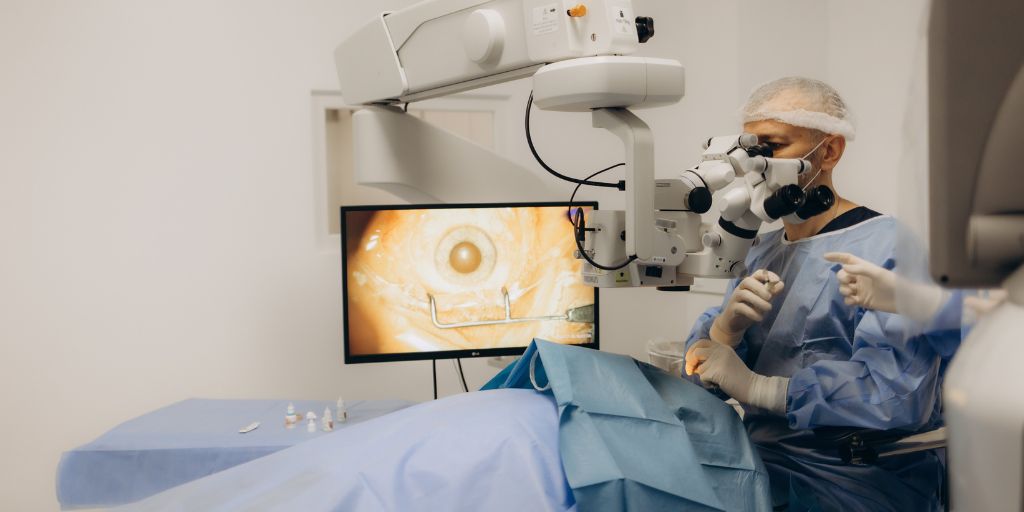
Picture this: a surgeon, in the midst of a delicate neurological procedure, works with hands steady while AI algorithms analyze imaging data in real-time, providing insights into nerve fibers and tissue patterns that even the most skilled human eye could miss. This is not some distant future—it’s happening now. The convergence of AI-powered medical devices with seamless data integration is revolutionizing surgery and patient care, combining precision with unprecedented data analysis to enhance outcomes and streamline clinical workflows.
AI in Surgery and Data Integration: Precision Meets Connectivity
Navigating the human body safely presents immense challenges in operating rooms worldwide. Surgeons rely on precision tools to avoid damaging critical structures, especially in pulmonology, neurology, and cardiology. AI is transforming this process by enhancing image- guided surgical devices with real-time data analysis from imaging technologies like CT and MRI.
These AI-enhanced systems go beyond augmenting the surgeon’s vision—they anticipate and guide surgical actions. By continuously learning from past cases, AI can identify subtle patterns, suggest optimal instrument placements, and even predict complications like blood flow changes or infection risks. For example, the AI system could analyze imaging data mid-surgery in a cardiology procedure and recommend adjustments to avoid arterial damage.
Seamless data integration is critical to making this possible. Modern healthcare relies on multiple disparate systems—imaging, electronic health records (EHRs), and clinical decision platforms—that must communicate in real time. A unified data integration platform ensures that patient histories, diagnostic imaging, and real-time vitals are accessible at every step, reducing risk and enhancing decision-making. Once the surgery is complete, the system logs all
AI-driven insights and surgical notes into the patient’s health record, improving continuity of care and providing critical data for future reference.
This interconnected approach leads to safer, faster surgeries with fewer complications, empowering surgical teams to deliver better outcomes and more predictable recovery processes.
Remote Monitoring and Chronic Care Management: Proactive, Patient-Centered Care
Beyond the operating room, AI and wearable medical devices are unlocking new ways to manage chronic conditions like diabetes, heart disease, and COPD. These conditions demand constant monitoring, which can overwhelm patients and healthcare providers. AI integrated with wearable devices collects real-time data on vital signs—like glucose levels, heart rhythms, and oxygen saturation—and provides actionable insights.
A wearable sensor might alert a COPD patient and their physician when oxygen levels dip dangerously low, triggering early intervention and preventing a trip to the emergency room. This proactive monitoring allows for personalized care recommendations, making treatment plans dynamic and responsive to changing health conditions.
The seamless data flow between wearables, AI platforms, and hospital EHRs ensures that healthcare providers maintain a 360-degree view of the patient’s health—whether they are monitoring remotely or during in-person visits. This integrated care approach reduces hospital admissions and ensures timely interventions, ultimately improving the quality of life for patients and reducing the burden on the healthcare system.
Enhanced Staff Workflows and Empowering Patients
Integrating AI and real-time data platforms isn’t just transforming surgery—it’s reshaping clinical workflows for nurses and support staff. Often overwhelmed by repetitive tasks such as monitoring vital signs and managing documentation, nurses can now rely on AI-powered systems to automate many of these functions. In settings like the ICU, these platforms monitor patient vitals in real-time, alerting staff to early signs of complications, such as sudden decreases in blood pressure or oxygen levels, allowing for faster intervention.
This shift enables clinical teams to focus more on direct patient care, improving patient experiences and outcomes. With reduced cognitive load, healthcare providers can be more attentive and proactive in addressing patient needs. Additionally, streamlined data integration ensures that every team member can access up-to-date patient information, eliminating delays caused by fragmented systems and improving care coordination.
These advancements are equally transformative for patients. Real-time monitoring and personalized updates through mobile apps empower patients to take an active role in managing their health. They receive actionable insights and reminders, fostering engagement and adherence to treatment plans. This shift from reactive to proactive care allows patients to feel more in control, improving satisfaction and outcomes.
The Future of Proactive, Predictive Healthcare
The impact of AI and interoperability on healthcare extends far beyond today’s capabilities—it’s shaping the future of medicine. Surgery is no longer confined to reactive interventions, where surgeons act only when absolutely necessary. Instead, the future of healthcare lies in anticipatory medicine, where AI-driven insights enable early detection, intervention, and prevention, making care more effective and less invasive.
This transition is not just about improving patient outcomes or surgical efficiency; it’s about transforming our healthcare systems. As technology evolves, healthcare organizations can scale these solutions across multiple departments and specialties, optimizing operations and preparing for future challenges like population growth or pandemics.
As we stand on the brink of a healthcare revolution, one thing is clear: the tools of tomorrow are already here, reshaping not just workflows but also possibilities. Precision, efficiency, and anticipation will soon become the new benchmarks—not luxuries but essentials in a world where technology and care work hand-in-hand to deliver unimagined possibilities.












